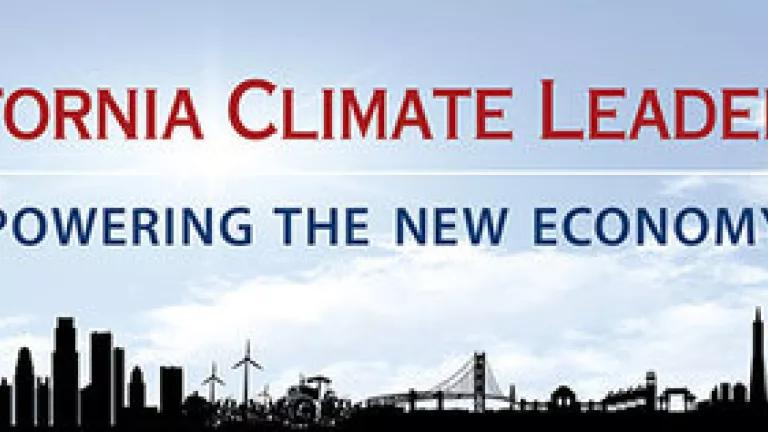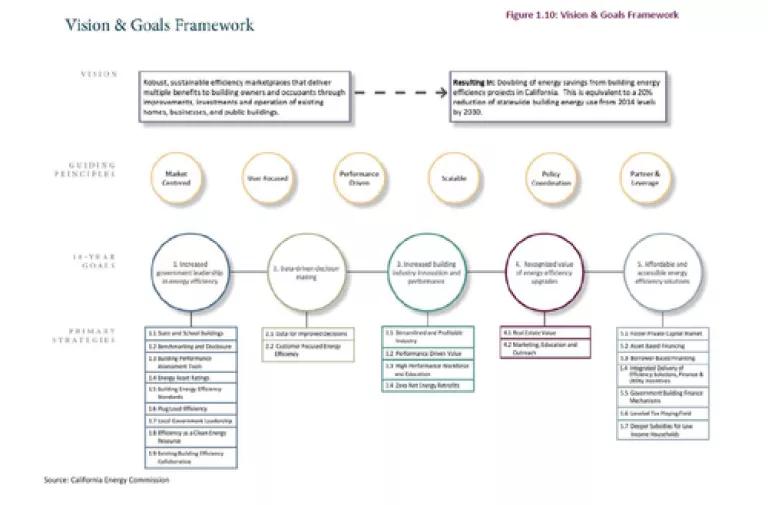
California recently took significant steps to ramp up its leadership in energy efficiency while challenging us to think of new ways of using energy smarter to avoid the pollution from conventional energy generation and improve the quality of life for all Californians. Bottom line - the expected savings from actions taken over the last few weeks could avoid as much pollution as more than 14 million cars emit in one year. And that will help the state reach our pollution-reduction goals at lower cost.
As NRDC previously reported, we still have a lot of work to do to get there (like make sure we accurately value efficiency, go after all available opportunities, and improve how we measure savings). There's no doubt that California's already solid energy efficiency foundation got a boost, but what does this all mean? Let's look at each new milestone:
Energy-saving legislation
California has a number of progressive efficiency laws on the books (like using energy smarter before turning to dirty or more costly resources to meet our needs) but various obstacles inhibited a wide-scale increase in energy and bill savings, until now.
Senate Bill 350 and Assembly Bill 802 will together:
- Double expected energy savings by 2030;
- Allow efficiency programs to help customers who wouldn't otherwise do so bring their buildings up to - and beyond - the current building energy code;
- Ensure operational (making sure equipment is running at top-notch efficiency) and expanded behavioral programs (helping customers choose smarter ways to use energy) are part of program offerings; and
- Provide whole-building energy usage information to commercial and multifamily building owners to measure consumption over time and inform smart energy decisions.
Based on the most recent data set and demand projections, doubling our efficiency goals means that our electricity needs in 2030 will be about 10 percent lower than our use in 2014. It will also avoid generating the same amount of electricity used by all of California's current households and enough natural gas to serve 2 million of them.
Won't these savings be offset by growing vehicle electrification?
To clean our air by getting off fossil fuels, California is striving for 1 million more electric vehicles on the roads in 10 years. While some question whether this will negate the savings achieved through SB 350, a recent mid-case analysis shows that in 2030, electric vehicle deployment will increase electricity demand by approximately 14,000 GWh (that's about one-seventh of the expected electricity savings from SB 350). In addition, SB 350 requires that 50 percent of our electricity come from renewable resources by 2030, ensuring that our electricity will be cleaner.
A plan to save energy in buildings
The California Legislature passed AB 758 to improve the efficiency of every existing building, including homes, businesses, and schools. This vision became a reality last week when the California Energy Commission voted unanimously to approve California's Existing Buildings Energy Efficiency Action Plan.
The Action Plan focuses on five main goals, including greater government leadership, more data access to inform decisions, improved performance of efficiency installations, increased value of efficiency in the real estate market, and sufficient financing to fund upgrades and even better energy saving offerings for underserved communities.

There will also be a new statewide existing building efficiency collaborative to provide oversight for the Action Plan's implementation. In our report, NRDC proposed that this collaborate be expanded to ensure successful implementation of all efficiency efforts across the state.
An unprecedented way to plan
The CPUC took a big step last year when it approved 10-years of funding to send the signal that efficiency is here for the long haul. Now the CPUC proposed an unprecedented approach to program planning called the "rolling portfolio." This proposed decision (anticipated to be voted on in the near future):
- Sets forth 10-years of energy-saving goals;
- Outlines a new approach for planners (such as local governments, third-party providers, and utilities) to strategically meet customers' needs; and
- Establishes a stakeholder collaborative structure to help ensure the most effective and high-quality programs are available to cut energy waste.
What's next?
Setting bold goals is the first step to yield greater energy savings. While we will still need tried-and-true programs where they make sense, we also need to experiment and expand in other arenas. That requires us to increase confidence in energy-saving estimates and results, be thoughtful and strategic about where and when we deploy efficiency programs, and allow for more new things like innovative programs and ways that efficiency can compete with other options to meet energy needs. See our report for a full list of our recommendations.
California has taken major steps toward greater energy savings over the past few weeks, but unless we resolve outstanding challenges, we won't be able to achieve the potential that now lies ahead. Fortunately, these new laws put the state on the right path, many of the issues are already on the radar at the energy agencies, and there is no shortage of committed and smart people working on these matters. Tapping into the expertise and creativity of efficiency experts and collaboratively solving problems will help ensure our efficiency ambitions become a reality.

